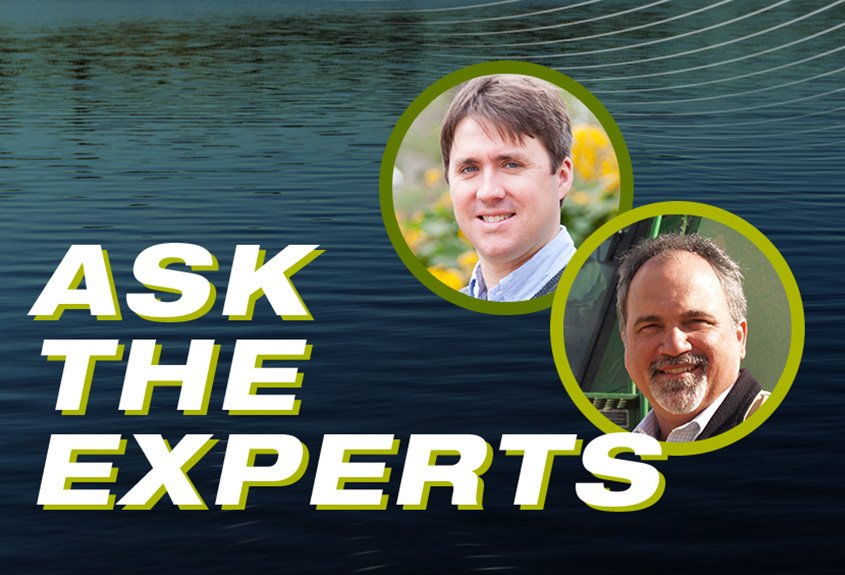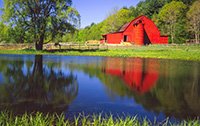Ask the Experts: Stewardship in Action

- Losing California salmon affects a network of related species, ecosystems and cultures.
- Farms and ecosystems can work together for a common good.
- Industry support funds essential environmental protection projects.
A partnership between Syngenta, the University of California, Davis (UC Davis) and the California Rice Commission (CRC) was forged to address the decline of California’s native fish by working to restore their habitats. Most of these species use floodplains in the Central Valley as a habitat during their outmigration. The partnership project focuses on the floodplains of the Sacramento River within the Sutter and Yolo Bypasses. These bypasses can be used to farm rice in the summer, and for flood control and ecosystems in the winter.
“Syngenta is pleased to have supported this project from its early stages. We have worked with the California rice industry for many years, and this was an outgrowth of our longstanding relationship and shared focus on environmental performance,” says Ben Sacher, lead, state affairs at Syngenta. “This project changes the narrative around the role that productive agriculture has in achieving environmental outcomes. It creates a positive impact on the salmon, and a new opportunity for the rice industry to deliver environmental benefits alongside its crop. This is a powerful example of how agricultural groups, non-profits and companies like Syngenta can work on important challenges.”
Q. What happened to the salmon habitats in California?
A. Andrew L. Rypel, Ph.D., Professor, Peter B. Moyle & California Trout Endowed Chair, Department of Wildlife, Fish & Conservation Biology, University of California, Davis: Salmon are declining for a host of reasons — dams, fishing, water extraction, loss of wetlands, to name a few. We are collaborating to get more salmon on the landscape as the loss of salmon is bad for everyone. Forest ecosystems in the spawning grounds get shut off from marine-derived nitrogen that salmon brings. Indigenous communities lose nutritious food and a sacred animal from the landscape. California fishing communities lose a source of revenue, and businesses, including farms, get mired in environmental regulations. Our work shows how winter-flooded rice fields can be used to expand habitats to juvenile salmon; rice growers are a major part of the solution to save salmon. Ninety-five percent of the historical floodplain was eliminated in California, yet there are 500,000 acres of rice fields. We are thinking creatively to use these lands to mimic the historical floodplains. This project shows how farms, ecosystems and flood control work together for a common good.
A. Paul Buttner, Manager of Environmental Affairs, California Rice Commission (CRC): Growth rates of baby salmon placed into winter-flooded rice fields are proven notable due to significant amounts of zooplankton, the natural food source baby salmon rely on. We hope to develop a management practice to extend the period when threatened runs of salmon can benefit from these fields, increase the habitat quality and enable the fish to willingly enter/exit the fields. There are many technical challenges that are being addressed through pilot-scale implementation and adaptive management over a period of years.
Q. What is your organization’s role in the project and why did you choose to get involved?
A. Rypel: It takes science, hard work and collaboration to get the pieces in place so we can move forward. We are finding ways to get the salmon on the fields, have them rear and get safely out. Our UC Davis team works on questions like how to drill holes and notches in rice boards to allow fish safe passage. We’ve done fish tracking studies and piloted technology and web applications to measure dissolved oxygen in real time and transmit those data into a website so managers can monitor temperature and oxygen conditions in the fields. If fields begin to develop harmful conditions, we have protocols to pull the boards and evacuate the fish. We are researching to show that this practice benefits the fish. These issues are important when you are working with an endangered species.
A. Buttner: The California rice industry is known as the Environmental Crop due in part to the focus on providing habitat enhancement for wetland-dependent species in the Pacific Flyway. CRC decided to work on using rice fields to help salmon recovery after early scientific work by California Trout (CalTrout) and UC Davis demonstrated that the reactivation of the historic floodplain is a vital element to salmon recovery and may be suited to provide a high-quality habitat for salmon.
This project changes the narrative around the role that productive agriculture has in achieving environmental outcomes. It creates a positive impact on the salmon, and a new opportunity for the rice industry to deliver environmental benefits alongside its crop. This is a powerful example of how agricultural groups, non-profits and companies like Syngenta can work on important challenges.
Q. How do your organizations collaborate on the project?
A. Rypel: It takes a village. The CRC has had major success with conservation programs and with the USDA’s Natural Resources Conservation Service (NRCS). They know the growers and their issues and economics. We identify critical science needs and design studies to answer key questions. This is important when we work through concerns from regulatory and resource agencies. UC Davis students are engaged in the work; we are training the next generation to solve problems that are collaborative, innovative and community-oriented. NRCS helped start this program and addresses concerns as they arise. Our agency partners are generous and patient — they help us see the regulatory side and provide insight into their stakeholder concerns and public mandates. Some agencies have their own scientists who help us. None of this is possible without partnerships with private industry — including the rice growers and sponsors like Syngenta. I give Syngenta a lot of credit for having the vision to see what we are trying to achieve. It is probably the most exciting science project I have ever been a part of, and the support of our project sponsors, especially Syngenta, continues to enable that.
A. Buttner: CRC is leading the overall effort with the centerpiece being two grants provided to CRC by the NRCS, which committed nearly $1.2 million. This funding requires 1:1 matching partner contributions in the form of in-kind technical assistance and/or financial contributions. This is where Syngenta’s commitment comes in as they contributed about half of these required matching funds or about 25% of the total project costs thus far. This major contribution, combined with others (see: Salmon.CalRice.org), enabled CRC to move forward.
Q. Why are stewardship projects, in general, important for organizations, universities and companies to get involved in?
A. Rypel: Humans have a major impact on ecosystems, and we need to accept that humans are mostly in charge. This leads to some interesting places, like thinking through the kinds of ecosystem services we value and exploring ways to harmonize farming with ecosystems. That’s the future, and the kind of work we should do more of. Having institutions with diverse missions collaborate toward these solutions is exciting, and I am proud to be part of it.
A. Buttner: We know the potential for rice to provide significant environmental benefits and be an important food source. Our growers participate by implementing stewardship practices on their farms. Often the costs are shared by the beneficiaries of these positive outcomes through the Farm Bill Conservation Title and other state and federal programs.
Q. What do you hope to achieve at the end of this habitat restoration project?
A. Rypel: We are aiming for a conservation practice for NRCS that incentivizes rice growers to participate in salmon conservation. I hope we boost the salmon populations as they are some of the most interesting and important animals in California, and on Earth. They deserve saving.
A. Buttner: We hope to have a proven program option our growers can enroll in to provide a high-quality salmon habitat for struggling salmon runs in the Sacramento Valley. This would be a great complementary program to our many existing programs that offer management practices to benefit waterbirds, which are also highly reliant upon California rice fields.
click to tweet ![]()

